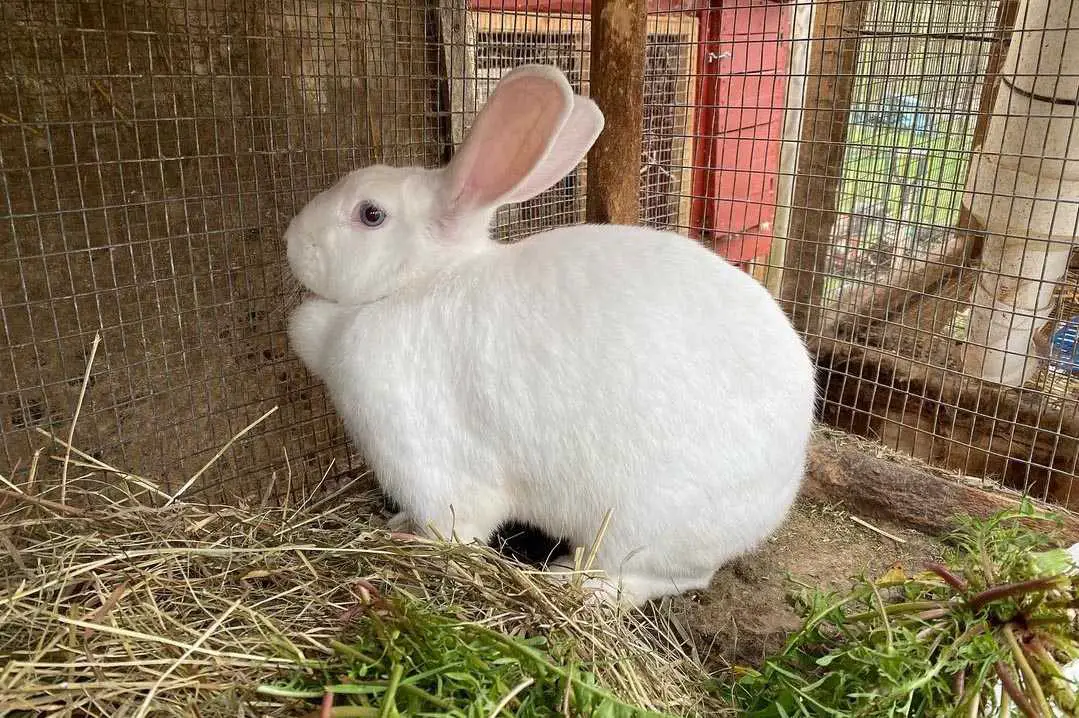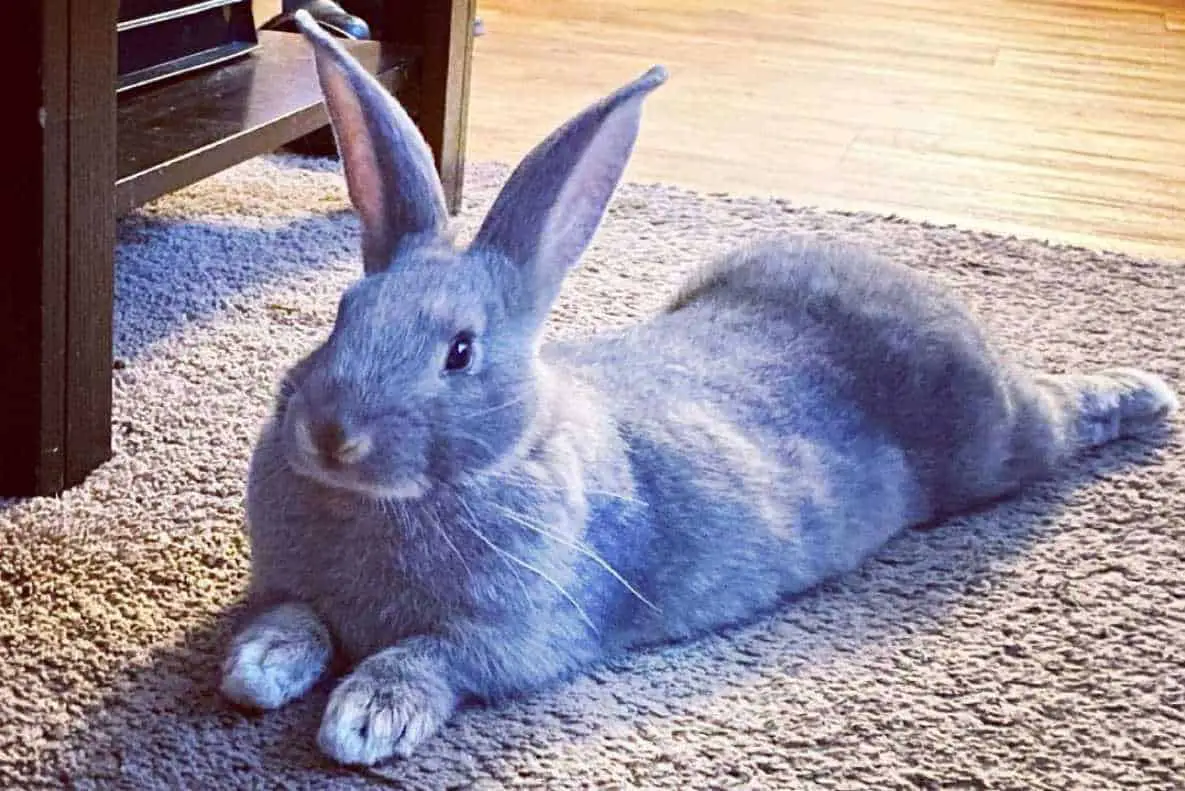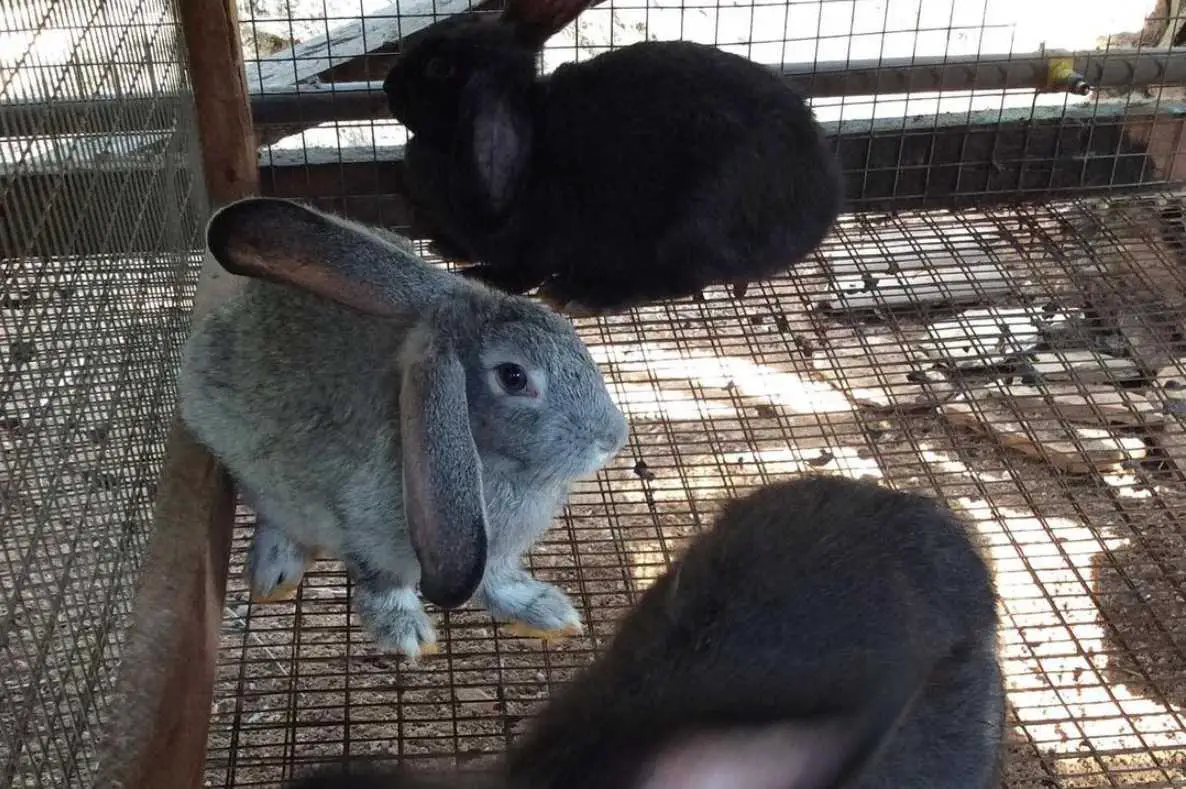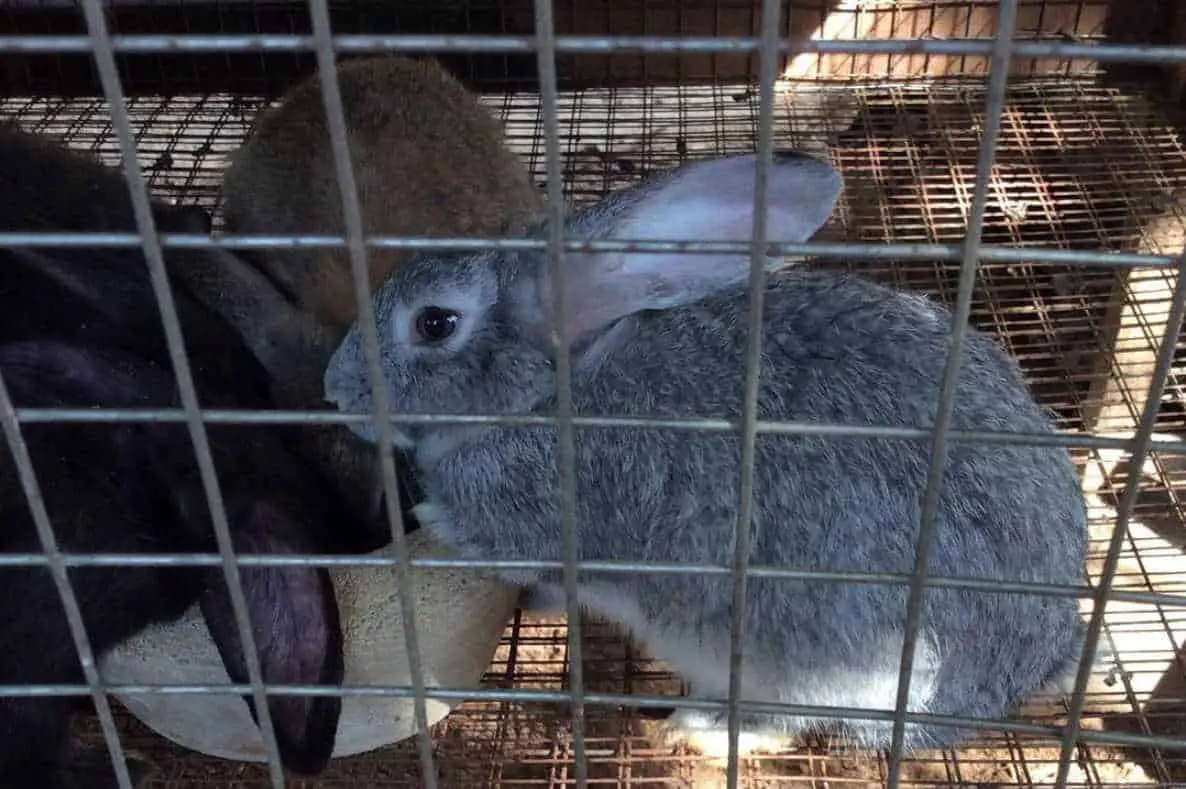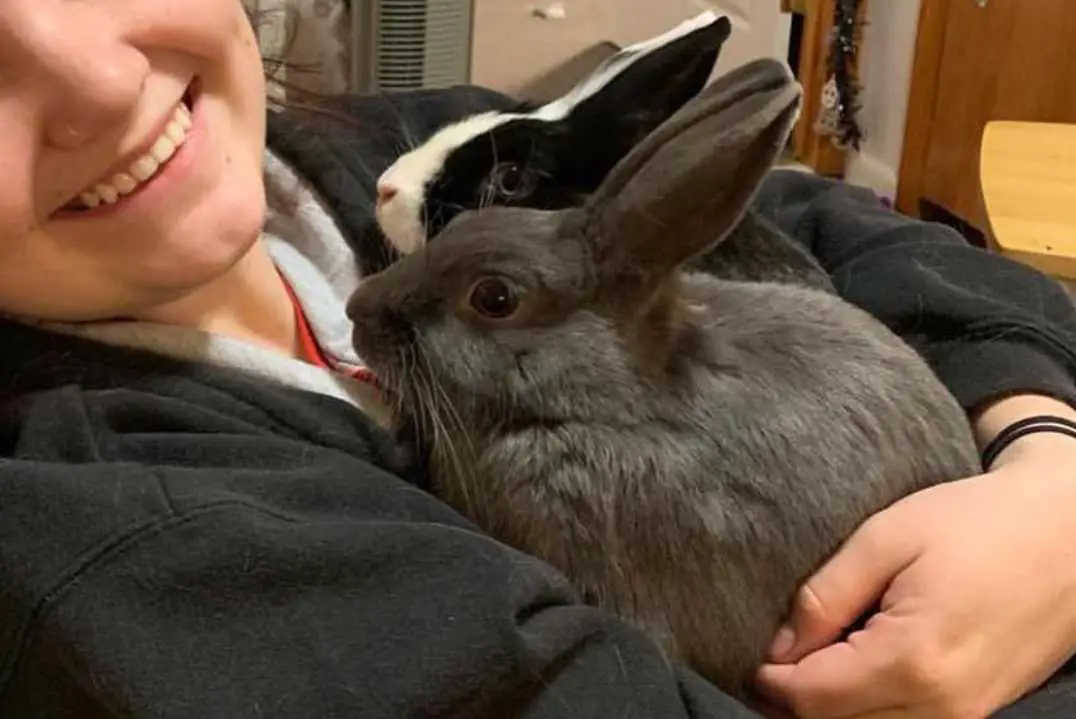For those looking for an excellent breed to adopt and take care of, you should consider getting a Beveren rabbit. Even though they are larger, they have the sweetest temperament that families will love. Take a look at this article for more information on this breed.
Short Information Chart
Before we go on and take a more profound understanding of this breed, we prepared a short information chart for you. This chart will help you learn about the most superficial facts about Beveren Rabbit that you should be aware of.
If you want to know more about this breed without reading the whole article, you may opt to watch the video below. Without further ado, here is a short information chart on Beveren rabbits.
| Breed | Beveren Rabbit (Oryctolagus cuniculus) |
| Size | Large |
| Body Shape | Mandolin or Semi-Arch |
| Weight | 8 to 12 lbs |
| Lifespan | 5 to 10 years |
| Color | Blue, White, Chocolate, Lilac, Black |
| Temperament | Active and intelligent |
| Rarity | Rare |
| Similar Breeds | Havana Rabbit, English Lop |
Breed History and Background
Nowadays, this breed is known to be one of the largest and oldest breeds that still exists up to this day. They also have many other names, such as the Big Blue Rabbit of Beveren, the Giant Beverin, or the Pointed Beveren.
Their name is derived from their origin town’s name, Beveren, located in Belgium and near Antwerp. This breed was first recorded in 1898 and is related to St. Nicholas Blue Rabbit and Blue Vienna Rabbit species.
The Beveren rabbit was occasionally mistaken for the St. Nicholas Breed in the early years. They have similar appearances, and breeders are close to each other. Eventually, it was determined that the rabbits with Blue fur were Beverens.
At the same time, those with Blue and White were St. Nicholas rabbits. Early breeders prefer Beveren rabbits with lighter shades of blue, with ‘light lavender blue’ being the most popular.
In 1905, Mrs. A. M. Martin brought this breed to Norwich. It was the first-ever recorded introduction of the Beveren Rabbit to Britain. The species was not regarded immediately, so a Beveren Club was initiated in Birmingham on May 29, 1918.
This club was later on changed to the British Rabbit Council. There are now five recognized Bever rabbit fur colors in the United Kingdom: solid blue, blue-eyed white, lilac, black, and brown.
By 1915, the Beveren rabbit was introduced in the United States. They are known as ‘Beverin rabbits’ in America, different from the spelling they used to be called.
In 1920, they were recognized by the American Rabbit Breeders Association or ARBA. Later on, their name was corrected to Beveren by the ARBA. They are one of the most popular large breeds in the United States in our modern times.
Standard Breed Appearance
As mentioned before, the Beveren rabbit is known as a giant rabbit breed. They have a mandolin-shaped body and generally weigh 8 to 12 lbs. They also have large, vertical ears that can grow up to 5 inches long. Their round faces and medium-length torso are some of their notable features.
One of their most unique features is their short, glossy fur. If you touch their skin, you’ll notice its thick feel. You may also see that their fur rolls back when touched and petted to a specific side.
Pet owners with this type of rabbit don’t have any worries about their skin since they do not shed much noticeably since they have short coats. Regular brushing is all that they need.
When it comes to color, different standards depend on where you live. In the United States, the ARBA only has three colors recognized. These are blue with a solid shade of light lavender-blue, blue-eyed white that’s not ivory or off-white, and black with a glossy jet black color.
In the United Kingdom, the BRC also recognizes the first three colors with ARBA.
However, they have two other recognized color variations to the Beveren rabbit: the brown and lilac varieties. The Brown variety should have an even color all throughout their fur. There is no specific standard for the lilac variety with the BRC.
Personality and Temperament
After knowing the standard appearance of a Beveren rabbit, you must also be aware of this breed’s personality and temperament.
Knowing these will give you some idea of how the breed should act once they have set in on your home and if they are suitable for your environment. Here are some of their most notable personalities and temperament without further ado.
Friendly and Calm
One of the best qualities of a Beveren rabbit is its friendliness and calmness. These are two qualities that most pet owners will look for in a rabbit, especially if they have a family and kids in their home.
It’s essential to make sure that you choose a friendly rabbit with other people and animals.
The Beveren rabbit is a friendly and affectionate breed that can mix well with other rabbit breeds. They can even get along well with children because of their calm demeanor. You just need to consider their personal space in the first few weeks so that they can adjust well to their surroundings.
Intelligent and Trainable
Another feature that you may be looking for in a rabbit breed is intelligence. Luckily for you, the Beveren rabbit is famous for its intelligence and trainability.
Pet owners won’t have a hard time teaching this breed some new tricks. Some say that you can even teach a Beveren rabbit to respond to its name.
Just like other pets, you must train your rabbits. You can teach many things; just make sure to do it one at a time so your rabbit won’t get confused.
Active and Curious
Beveren rabbits are a very active breed that is fun to play with. Their large size makes them an easy rabbit breed for children to interact with. They are also very curious, so watch them repeatedly to make sure that they don’t do anything that can harm them as they roam around.
Health and Reproduction
When it comes to health, it’s essential to take note that rabbits get sick very quickly. They need close monitoring to ensure that they don’t have any issues with their health.
Most rabbit concerns are connected to their teeth and digestive system; that’s why their food plays a massive role in their health.
If you are already considering their reproductivity for meat or to crossbreed, the Beveren rabbit is the perfect breed. They produce a considerable amount of litter every cycle, and the young ones mature fast too.
Their average number is two to four litters per year, with four to six kittens each. Female Beveren rabbits are also known to be good for nurturing since they are sweet and caring in nature.
Common Health Problems
After talking about this breed’s overall health and breeding information, this next section will show you all there is to know about the most common health problems. Learning more about each situation will help you prepare to bring a Beveren rabbit home and give them a happy, healthy life.
Teeth Problems
Like all other breeds, the Beveren rabbit also experiences difficulties with its teeth that never stop growing. To prevent discomfort, make sure that your rabbit has enough hay to gnaw on as much as they want.
Keep their diet on track and make sure that the items included in their meals are hard to gnaw on to train their teeth and trim them regularly.
Your rabbit’s teeth may seem like it’s growing too fast, even with enough hay on their diet. If this happens, you may also visit your local veterinarian to find the solution to this problem and take care of your rabbit’s teeth.
Digestive System Problems
One of the most common reasons rabbits are brought to a vet is digestive system issues. It may not be noticeable at first, but these health problems can be deadly for your rabbit, so make sure you look out for any symptoms.
Digestive issues in rabbits come in many different symptoms, such as appetite loss and less energy.
The most common digestive problem is GI Stasis. It’s a condition where bacteria in the stomach becomes uncontrollable, which causes a lot of pain for your pet.
Some symptoms include teeth grinding, diarrhea, and excessive gas. If you suspect that your rabbit has GI Stasis, immediately bring them to a vet.
Flystrike
The last health problem on our list is Flystrike, also called Myiasis. This occurs when a fly lays their eggs on your rabbit’s fur, especially if it’s dirty. If the eggs hatch, they can bite your pet’s skin and become deadly.
One way to prevent this from happening is to regularly wash your rabbit and their cage to keep them clean.
Food and Diet Information
Rabbits can live for a long time if given a healthy diet. Like any other breed, the Beveren rabbit’s diet should consist of no less than 70% hay and additional nutrients such as fruits, vegetables, and leafy greens. You may also give them some pellets and fruits as snacks throughout the day.
As a rabbit owner, you should know what you are feeding your rabbit since they will eat almost anything you give to them. However, they have a sensitive stomach, so one wrong meal can affect their health terribly.
Not having enough hay in their diets can affect both their teeth and digestive system, so make sure that you have enough portions that they need.
Training
Since we mentioned before that the Beveren rabbit is an intelligent breed, you can actually train them and teach them a few tricks. This breed will quickly follow and understand your actions to be very easy to train. Check out what you can teach your rabbits below.
- Potty Training: This breed is one of the easiest rabbit breeds to potty train. All you need to do is prepare a litter box and then put their droppings there every morning so that they will recognize the area by scent. Do this continuously, and you’ll observe that they will eventually use the litter box directly.
- Crate Training: Since the Beveren rabbit is considered a large breed, they need a big hutch with enough space for them to live in. They need a lot of exercise, so it’s preferable to get them a pen outdoors to roam freely during the day and learn to stay in their hutch at times.
- Leash Walking: This may come as a surprise to some people who don’t know that there are rabbit leashes. You can actually buy them at pet shops, and they are perfectly safe. Train your rabbit to use them so that you can take them out on afternoon and morning walks as a form of exercise.
Care Sheet
Now that you know all you need about the Beveren rabbit, we prepared a few additional notes on how you should take care of your pet. There are specific shelter, maintenance, and grooming tips for each breed, so make sure you also note these tips.
Shelter and Care
The Beveren rabbit is a large breed, so make sure they have a big cage. The minimum dimension should be a height of 14 inches and an area of 5 square feet.
If you’re using a metal cage, buy soft bedding for them to lie down on. Rabbits are known to be hardy animals, which means that they can stand any temperature and even stay outdoors during winter.
Grooming
One of the best things pet owners love about the Beveren rabbit is that they don’t need much grooming. All you need to do is brush their fur twice a week to keep them straight and prevent knots.
Check all of their body to see if there is anything out of the ordinary and have it cleaned or treated immediately.
Summary
Now that you’ve reached the end of this article, we hope that we were able to help you understand the Beveren rabbit. The information you learned from this article should help you in making a decision on the breed that you want to adopt.

